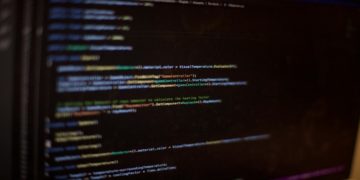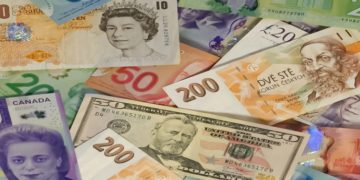The professional poker world has undergone significant transformations in 2025. According to the Global Poker Industry Report, the number of professional poker players worldwide has increased by 14% since 2023, with approximately 58,000 individuals now making their primary income from the game. Online poker platforms have seen a 23% growth in user base over the past year, processing over $12.3 billion in transactions.
The average annual income for a mid-tier professional poker player in 2025 stands at $87,500, though this figure varies dramatically based on skill level, game selection, and geographic location. Top-tier professionals can earn well into the millions, with the top 100 players collectively earning $428 million in tournament winnings in the past 12 months.
Furthermore, the poker industry has seen significant technological integration. Blockchain-based poker platforms now account for 31% of all online poker traffic, providing players with provably fair games and reduced house edges of just 2.1% compared to the traditional 4-5%.
Starting the Journey: From Amateur to Professional
The path to becoming a professional poker player at Rainbet UK typically begins with a passion for the game and early success at lower stakes. Most professionals report spending an average of 3-4 years developing their skills before making the transition to full-time play.
Building the Fundamental Skills
Before anyone can consider poker as a career, they must master several core skills:
- Mathematical probability understanding
- Psychological awareness and emotional control
- Bankroll management techniques
- Strategic thinking and game theory
- Physical and mental stamina
A recent survey of 1,500 poker professionals showed that 78% spent at least 20 hours per week studying the game during their developmental years. This included reviewing hand histories, working with coaches, and using poker simulation software.
In addition, successful professionals typically start with a bankroll of at least 100 buy-ins for their chosen stake level. For example, someone playing $2/$5 No-Limit Hold’em cash games (with $500 buy-ins) would ideally have $50,000 set aside exclusively for poker.
Financial Reality of Professional Poker
The financial aspects of professional poker are often misunderstood. While the media highlights million-dollar tournament wins, the day-to-day reality involves careful bankroll management and dealing with significant variance.
Income Breakdown by Game Type
| Game Format | Average Annual Income (2025) | Win Rate | Hours Required Weekly | Bankroll Recommendation |
| Cash Games | $72,000 | 2-5 BB/100 hands | 30-40 | 50-100 buy-ins |
| Tournaments | $81,500 | 25-35% ROI | 35-45 | 300+ buy-ins |
| Sit & Go’s | $63,000 | 8-12% ROI | 40-50 | 200+ buy-ins |
| Heads-Up | $94,000 | 3-6 BB/100 hands | 25-35 | 75-125 buy-ins |
The 2025 Poker Economics Report indicates that 67% of professional players experience at least one downswing per year where they lose 20% or more of their bankroll. Consequently, successful players typically set aside 6-12 months of living expenses separate from their poker bankroll.
Moreover, professional poker players face unique tax challenges. In the United States, for instance, all gambling winnings are taxable income, but losses can only be deducted against winnings. This creates a situation where players may pay taxes even during losing years if they had some winning sessions.
Psychological Battle
The mental aspects of poker are often more challenging than the technical skills. A 2025 study from the Journal of Gambling Studies found that 41% of professional poker players reported experiencing symptoms of burnout at least once in their careers.
Common Mental Challenges
Professional players deal with several unique psychological challenges:
- Variance and downswings – periods of losing despite playing correctly
- Isolation – long hours spent playing either online or in quiet casino environments
- Sleep disruption – tournaments and cash games often run late into the night
- Emotional regulation – controlling reactions to both winning and losing
- Identity attachment – separating self-worth from poker results
Therefore, successful players develop mental health routines. According to a survey of 500 winning players in 2025, 83% practice some form of meditation or mindfulness, 76% exercise regularly, and 68% work with either a poker coach or therapist.
Evolution of Training Methods
Training methods for poker professionals have evolved significantly in 2025. Artificial intelligence tools now dominate the training landscape, with 87% of professionals using AI-powered analysis tools to improve their game.
The most popular training resources include:
- GTO Solvers – Programs that calculate game theory optimal solutions, used by 94% of professionals
- Database Analysis Tools – Software that analyzes millions of hands to identify leaks, used by 89% of professionals
- AI Training Partners – Programs that play against humans and provide real-time feedback, used by 76% of professionals
- Professional Coaching – One-on-one training with established winners, used by 62% of professionals
In addition, professional poker training subscriptions average $250-500 monthly, with serious players investing between $3,000-$6,000 annually in their poker education.
Lifestyle Reality
The lifestyle of a professional poker player differs significantly from media portrayals. While there is flexibility in working hours, most successful professionals maintain strict schedules. The average full-time player reports working 45-55 hours weekly between playing, studying, and reviewing hands.
Travel is another major component for tournament specialists. The 2025 tournament circuit includes approximately 350 major events across 42 countries. Top tournament professionals travel 150-200 days per year, adding significant expenses and lifestyle challenges.
For example, the recent WSOP Circuit expansion has increased to 32 stops worldwide, requiring players who follow the complete circuit to budget approximately $78,000 annually for travel and accommodation expenses.
Is Professional Poker Viable in 2025?
Professional poker remains a viable career path in 2025, but with important caveats. The game continues to become more challenging as training resources improve and information becomes more readily available. The edge between skilled players has narrowed, with the average win rate for professionals dropping by 0.5 big blinds per 100 hands over the past five years.
However, opportunities exist for those willing to put in the work. The most successful players in 2025 tend to specialize in specific formats, develop unique approaches to the game, and maintain disciplined lifestyles focused on continuous improvement.
The journey of a professional poker player remains one of the most mentally challenging career paths available – combining mathematical precision, psychological warfare, and entrepreneurial risk management in a constantly evolving landscape.
David Prior
David Prior is the editor of Today News, responsible for the overall editorial strategy. He is an NCTJ-qualified journalist with over 20 years’ experience, and is also editor of the award-winning hyperlocal news title Altrincham Today. His LinkedIn profile is here.












































































